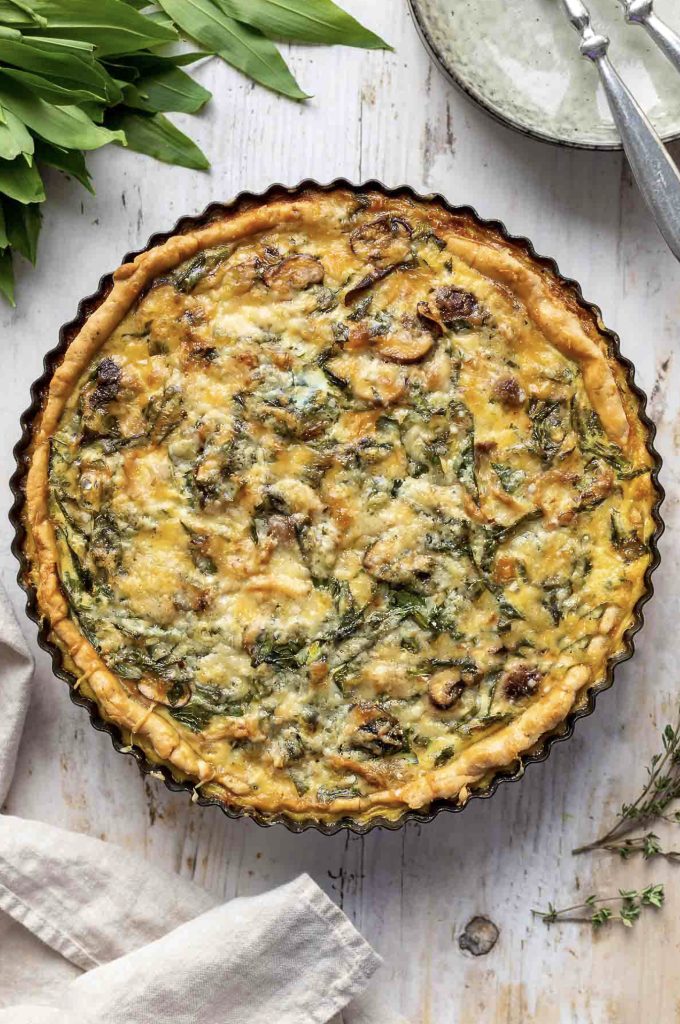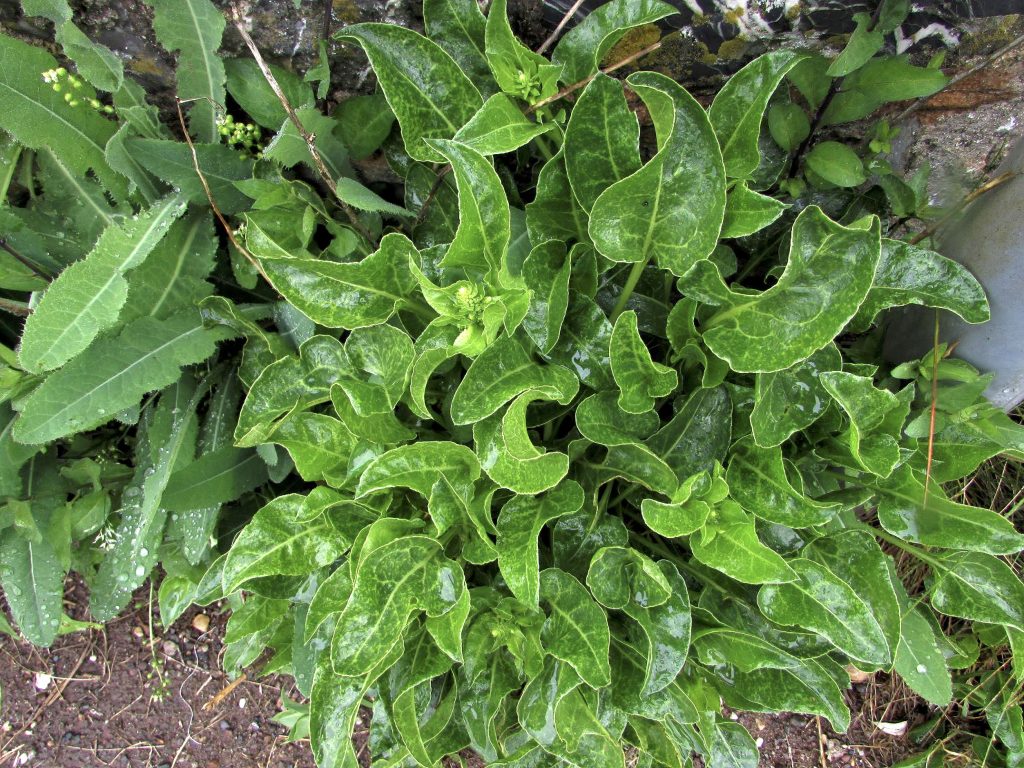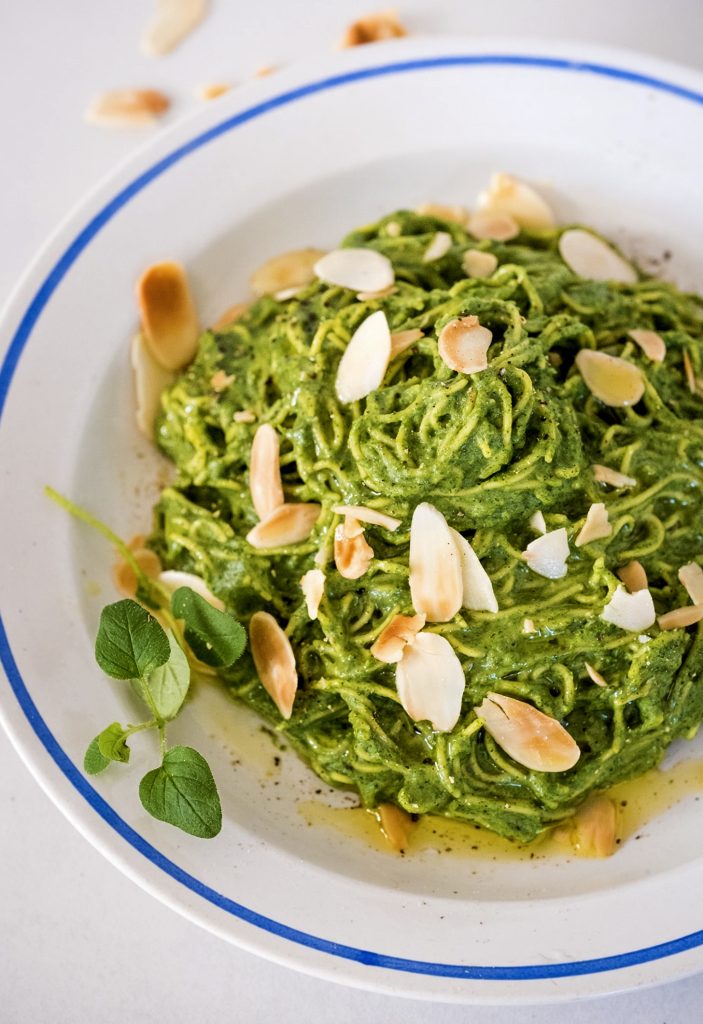This morning, the air was rich with the scent of salt and new blossoms, as I wandered down to the coastline and through the woods beyond, foraging in the cool hush of late spring. The sun had just begun to warm the earth, casting golden light across the hedgerows and pathways. Wild garlic flourished in shady patches, its white star-like flowers brightening the undergrowth, its scent heady and fresh beneath my fingers. Closer to the sea, the glossy green leaves of sea beet caught the light, clustered like leafy jewels in crevices by the dunes, their briny tang a whisper of the ocean.
The simple joy of gathering food from the wild, each leaf and stem carefully chosen, brought a grounded sense of contentment. I moved slowly, with purpose, breathing in the clean spring air, alive with birdsong and the distant rush of waves. It felt good to be part of the season’s rhythm, attuned to its subtleties.
Back home, the afternoon ripened into gentle warmth. I set about preparing a quiche—something light and earthy to match the day’s quiet beauty. I began by gently sautéing wild mushrooms, their aroma deep and woodsy, like the forest floor after rain. Into the pan went the chopped wild garlic and sea beet, their greens wilting and melding into the mushrooms, creating a filling both vivid and fragrant.
I poured the mixture into a buttery shortcrust base, added a creamy custard of eggs and a touch of cream, seasoned simply with salt, pepper, and a hint of nutmeg. As the quiche baked, the scent filled the kitchen—rich, herbal, and inviting.
By late afternoon, the quiche had cooled slightly, the custard set to a tender wobble, the crust golden and crisp. The first bite was everything I’d hoped for—earthy, garlicky, with a subtle sweetness from the sea beet and the umami depth of the mushrooms. Every mouthful tasted of the morning’s walk, the hush of woodland paths, the hush of tide and wind.
It was a perfect meal for the season—humble, nourishing, and rooted in the beauty of the land. A celebration of spring, shared with the light and birdsong of a fading, beautiful day.
- For the pastry:
- * 250 g spelt flour or regular flour
- * 1 teaspoon sea salt
- * 1 teaspoon fresh thyme leaves, roughly chopped
- * 125 g unsalted butter, cold from the fridge, cubed (plus more to grease the quiche form)
- * 4-5 tablespoons ice-cold water
- * 1 egg, lightly beaten (for coating the pastry crust)
- For the filling:
- * 1 tablespoon olive oil
- * 2 shallots, finely diced
- * 75 g cremini mushrooms thinly sliced
- * 75 g oyster mushrooms, torn into bite sized pieces
- * Bunch of sea beet (about 50 g)
- * leaves from two sprigs of thyme
- * 4 medium eggs
- * 350 ml milk (whole or unsweetened plant-based such as soy – your choice)
- * Sea salt and freshly ground pepper, to taste
- * 150 g Gruyère cheese, grated, plus extra for topping
- * 1 bunch wild garlic, trimmed and chopped (about 50 g)
- For the quiche base:
- 1. To prepare the dough using a food processor pulse together the flour, salt and thyme until combined. Then add the butter and pulse until you have a rough breadcrumb consistency. Finally, add the water, a little at a time, pulsing, until the mixture forms a dough. To prepare the dough by hand: in a large mixing bowl, combine the flour salt and thyme. Add the butter and using your fingers, rub into the flour mixture until you have a rough breadcrumb consistency. Add a little water and mix together until mixture forms a dough.
- Shape the dough into a disc and wrap in plastic wrap; refrigerate for at least 30 minutes (until firm).
- Meanwhile, grease a 24 cm tart pan with removable bottom.
- Once the pastry is chilled, roll it out on a floured surface into a large disc (3 mm) that is just wider than the tart pan. Lay the dough over the tart pan and push the pastry into the edges of the pan with your fingers, then transfer it back to the fridge to cool for another 10 minutes.
- Meanwhile, heat the oven to 410°F / 210°C (fan-assisted 190°C).
- Prick the base of the pastry with a fork, line with baking paper, and fill with pastry weights or dried beans/rice. Bake for 15 minutes, then remove from the oven, and lift out the beans and baking paper.
- Brush the pastry with a little beaten egg and return to the oven for 10-15 minutes. Set aside to cool. Note: If the edges of the pastry are overlapping the pan, you can trim them with a sharp knife before you add the filling.
- For the quiche filling:
- Meanwhile, make the filling. In a large skillet, heat 1 tablespoon olive oil over medium heat, add the shallots and cook for 2-3 minutes, stirring occasionally. Add the mushrooms, increase heat slightly and cook for 7-8 minutes, until softened and lightly browned. Transfer to a plate and set aside to cool.
- Break the eggs into a large bowl and beat well. Pour in the milk, add the grated cheese, a good pinch of salt and pepper, and mix to combine.
- Once the mushrooms are cool, fold them into the egg mixture, add the wild garlic and sea beet and mix well.
- Place the tart pan on a rimmed baking sheet (to catch any run-off or leaks). Pour the filling into the pastry case and spread into an even layer. Finally, top with a generous layer of grated cheese.
- Transfer the tart to the already preheated oven and bake for 30-35 minutes, until golden and just set. Remove to a rack and let stand for 10 minutes; remove the sides and the pan, slice and serve. Enjoy served warm or at room temperature.







